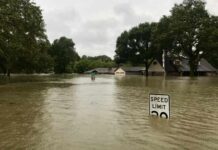
The US Department of Education is ending its pandemic-era leniency by resuming collections on over five million defaulted student loans, with tax refunds and government benefits now at risk of interception.
At a Glance
- Collections on defaulted federal student loans will resume May 5, 2025, after a pause that began during the COVID-19 pandemic
- Over 5 million borrowers currently in default face potential seizure of tax refunds and federal benefits
- The Treasury Offset Program will intercept government payments to collect outstanding debts
- Wage garnishment for defaulted borrowers will begin later this summer
- Education Secretary Linda McMahon criticized the Biden administration for keeping borrowers in “confusing limbo”
Collections Resuming After Four-Year Pause
The Department of Education announced it will restart “involuntary” collection efforts on defaulted federal student loans beginning May 5, ending a four-year hiatus implemented during the COVID-19 pandemic. This action affects more than 5 million borrowers who have failed to make payments on their loans for at least 270 days, the threshold for default. Federal student loans have been in a state of collection pause since March 2020, initially implemented under the Trump administration and extended multiple times under President Biden.
The primary mechanism for collecting these debts will be through the Treasury Offset Program, which allows the government to intercept federal payments such as tax refunds, Social Security benefits, and federal salaries to satisfy outstanding debt obligations. Affected borrowers should expect to receive notification within two weeks, according to department officials. For many borrowers who graduated during the pandemic, this will be their first experience with the student loan repayment system.
Department Criticizes Previous Administration
Education Secretary Linda McMahon issued pointed criticism of the previous administration’s handling of student loan policies. The Department of Education stated that the Biden administration had kept borrowers in a “confusing limbo” by repeatedly extending the repayment pause while simultaneously pursuing loan forgiveness plans that were ultimately struck down by the Supreme Court in 2023.
“American taxpayers will no longer be forced to serve as collateral for irresponsible student loan policies,” said Education Secretary Linda McMahon. “The Biden administration misled borrowers: the executive branch does not have the constitutional authority to wipe debt away, nor do the loan balances simply disappear.”
The resumption of collections follows the Supreme Court’s decision last year that ruled President Biden’s ambitious student loan forgiveness plan unconstitutional, as it lacked congressional approval. The plan would have forgiven up to $20,000 in federal student loans for millions of borrowers. Additionally, the Biden administration’s SAVE repayment program has faced legal challenges, further complicating the landscape for student loan borrowers.
Options for Defaulted Borrowers
Borrowers currently in default are encouraged to contact the Default Resolution Group to explore available options before involuntary collections begin. The Department of Education outlined several pathways for borrowers to address their defaulted loans, including making monthly payments, enrolling in income-driven repayment plans, or pursuing loan rehabilitation. Loan rehabilitation allows borrowers to remove the default status after making nine consecutive monthly payments.
“Borrowers who graduated during the pandemic may have no experience with loan repayment, so it is important to educate them about the process, including their rights and responsibilities,” said higher education expert Mark Kantrowitz.
The situation appears increasingly dire as reports indicate an additional 4 million borrowers are in “late-stage delinquency,” meaning they could soon join the ranks of those in default. Some analysts project the total number of defaulted borrowers could rise to 10 million without significant intervention. Beyond the Treasury Offset Program, the Department plans to authorize guaranty agencies to begin their own collection activities and will implement administrative wage garnishment later this summer for those who remain in default.
Financial Impact on Borrowers
For many Americans already struggling with inflation and economic uncertainty, the resumption of collections could represent a significant financial blow. Those expecting tax refunds may see them redirected to loan repayment, and retirees depending on Social Security benefits could face reduced payments. The Department of Education has emphasized that these actions are necessary to meet the government’s responsibility to taxpayers, as the outstanding loan balances represent a substantial financial obligation.
The policy change represents a significant shift after years of pandemic-related accommodation. While borrowers have had more than four years without collection pressure, the Department of Education is now making it clear that the time for leniency has ended, and the responsibility for repayment cannot be further delayed.

























